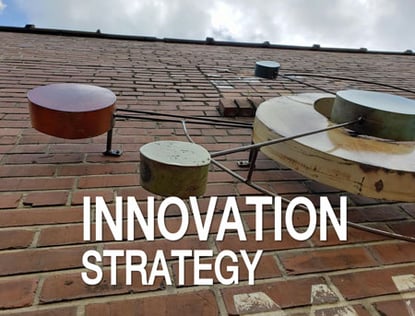Innovation isn’t exclusively the executive team’s responsibility. Still, it’s vital that senior leaders actively encourage generating, testing, and adopting innovative ideas.
How can your executive own this role?
Here’s a four-item gameplan executives can embrace. Implementing the gameplan will spur generating ideas and setting the stage for responding more positively to employees’ innovative ideas.
1) Describe Where Innovation Is Needed

Saying Yes to more ideas depends on linking the organization’s direction to where innovation is focused. It’s up to the leadership team to broadly share where the organization most needs innovation to move ahead. Whether it’s growing revenue, expanding into new markets, reducing costs, boosting customer satisfaction, or something else entirely, providing clear targets orients employees toward innovating where there’s heightened organizational interest.
2) Convey Your Appetite for Change

Innovative ideas come in diverse sizes. Your leadership team’s appetite for change sets the expectation for how significant your innovation initiatives should be. Amid a major transformation, incremental ideas are decidedly ho-hum. If you’re seeking tweaks to what’s working, though, organization-shaking ideas are DOA.
You can adapt an idea continuum like this one to describe your innovation target:
- Incremental Ideas: These encompass valuable, yet easy and familiar improvements to current products, processes, or services. They are ideal when your risk tolerance is low.
- New and Revamped Ideas: This strategy involves focusing on reimagining earlier approaches and freshening them up. It’s a smart approach when there’s an ongoing need for continual improvements to outpace the marketplace.
- Breakthrough Ideas: These concepts are visionary and ambitious. They typically require more resources and take longer to develop. The promised reward is groundbreaking innovation within the current business model.
- Transformational Ideas: These bold and disruptive ideas imply revolutionizing your organization, industry, and market. They require a major appetite for change and risk commensurate with substantial rewards.
Identifying leadership’s preferences among these options frees employees to focus and align innovation to the right risk and change profiles.
3) Highlight Preferred Paths for Originating Ideas

Communicate how the leadership team prefers to see innovative ideas emerge and move through the organization. Here are several possibilities:
- Solving Critical and Known Issues
- Innovation Backed by Data-Driven Insights
- Collaborative Idea Generation from Cross-functional Teams
- Ongoing Prototyping and Testing
4) Provide Permission to Navigate Internal Barriers

In any organization that has multiple layers, chances are that managers are in place who reached and solidified their positions through killing innovative ideas. Their fatal objections? Claiming that innovative ideas mess with efficiency, buck conventional wisdom, or needlessly rock some boat somewhere.
The executive team must help innovators circumvent this hidden internal resistance. Here’s a starting list:
- Senior managers engaging and observing throughout the organization to uncover stalled ideas.
- Offering varied forums and formats for employees to share ideas directly with leadership.
- Celebrating innovative, risk-taking employees to signal that innovation and rocking the boat are critical to success.
- Introducing a process for escalating ideas with strong potential that are being under-resourced, stalled, or facing elimination.
The Leadership Team Is Vital for Igniting Innovation
Fostering an organizational culture that ignites new thinking and ideas depends on communicating the organization’s innovation preferences. C-Suite executives are the gatekeepers for sharing strategic priorities and maintaining open dialogue to focus and support innovators who are creating positive change.
Reach out to me directly, and let’s talk about how to introduce the gameplan within your organization to ignite innovation, implementation, and results! - Mike Brown



